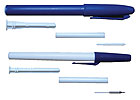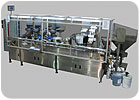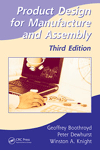

You may not think of a felt-tip pen as a surgical tool, and yet they are routinely used in surgical procedures. Physicians use them directly on a patient’s skin to indicate an incision path. They also use felt-tip pens to write on glass specimen containers, plastic syringes, paper labels, cloth and, of course, casts. These are no ordinary markers, however. They are sterile, disposable and nontoxic.
Recently, a medical device manufacturer hired systems integrator Orientech Inc. of Lachute, Quebec, Canada, to design and build an automated assembly system for surgical pens. The system needed to assemble the pens at a rate of 120 assemblies per minute.
In this profile, Charles-Alain Carriere, president of Orientech, describes how his company’s automation engineers made their mark.
For more information on automated assembly systems, call Orientech at 450-562-0745 or visitwww.orientech.com.
What are the dimensions of the finished assembly?The lengths and diameters vary, depending on the model. A typical marker is approximately 14 centimeters long and 1 centimeter in diameter.
How many parts are assembled?Five-a barrel, ink reservoir, nib, back plug and cap.
What are the parts made of?Four of the parts are plastic. The fifth, the ink reservoir, is made of a filter material to absorb the ink.
Describe the system.The system consists of five vibratory feeding units with transfer and loading modules, an indexing conveyor with assembly stations, ink injectors, assembly verification sensors, and a reject station. All totaled, the system has 10 stations.
All components are dumped in bulk into vibratory feeding units to be aligned and transferred to their loading stations. The barrel is placed on the conveyor first and then indexed to each assembly station where a component is inserted.
During assembly, bad parts are tagged to be rejected at the end of the cycle. If any process gets interrupted, a display will show the corresponding alarm code to quickly correct the situation.
The system has a user-friendly operator interface and a built-in purge system to clean the ink injectors. It includes electric and pneumatic panels, and safety light curtains.
What methods are used to assemble the product?The parts go together with snap-fits.
What checks or inspections are included in the process?Just before the ink reservoir is inserted, it is injected with ink and immediately inspected with a capacitive sensor to confirm the presence of ink.
In addition, a machine vision system inspects the nib to ensure that it has been inserted correctly.
Can the system accommodate product variants?This equipment can assemble similar pens by changing the tooling and the feeding units, depending on the model.
What was the most challenging aspect of designing and building the system?The components to be assembled were of low quality. The tolerances on the molded parts were loose. To make matters worse, pigments in the plastic influenced how well the parts held tolerances. In other words, the dimensions of a cap could vary slightly depending on whether it was red or blue. As a result, the process window for the assembly stations had to be very large to accommodate wide variation in part dimensions.
Editor’s note: Whether you’re a systems integrator or the in-house automation team of an OEM, if you’ve designed a system that you’re particularly proud of, tell us about it. Send an e-mail to John Sprovieri, editor of ASSEMBLY, at sprovierij@bnpmedia.com, or call 630-694-4012.



